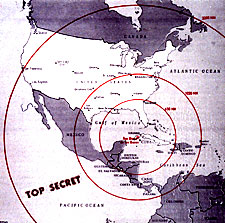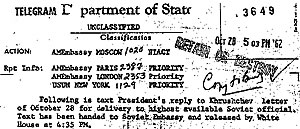|
All documents can have specific audiences. Indeed, they can have several audiences. Messages directed toward other governments can also have multiple audiences. A message from the government of the United States to the government of Cuba may also be intended to show Cuban Americans that the American government (and the political party in power) is responding to the concerns of this influential segment of the Florida electorate. A strong statement of concern that one nation is conducting its affairs in an unacceptable manner may also be directed toward other nations that might contemplate similar actions. A government can also choose to present information about its own internal affairs in a way designed to avoid harmful consequences in the international arena. An optimistic press release on economic growth can be intended to calm international investor fears about the stability (and security) of foreign investments within the country.
|
|
Such documents provide valuable insight into a government’s intentions or strategies, but may not provide critically important information about an issue. In addition, significant amounts of international correspondence are classified and not publicly available for many years. Statements from the diplomatic archives of the Soviet Union and the United States often began their existence as “classified” (secret) documents, but now are part of the public record. Often the declassification of these formerly confidential sources leads to a revision of the historical record. | 
Cuban Missile Crisis - Missile Range
|
For example, scholars had long suspected that United States President John F. Kennedy promised the Soviet Ambassador to Washington that he would remove American missiles from Turkey in exchange for a Soviet promise to remove their missiles from Cuba—something the Kennedy Administration vehemently denied at the time. Recently declassified sources indicate that such a promise was indeed made.

State Department Telegram conveying President Kennedy's reply to the Radio Moscow Announcement, October 28, 1962 |
|
Was the intended audience very small? Was the document ever intended for public viewing? How can you assess primary audience? Secondary audiences? When confronted with an official document that has many possible audiences, the first step is to make a list of all the possible audiences you can think of. Next, examine the text carefully to determine which passages of the text seem to be directed at one or more of these audiences. Finally, consult other sources, especially books and articles written by professional historians that offer insights into the source and its context.
 
|







